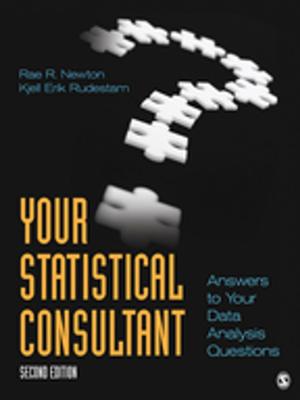Computational Neuroscience and Cognitive Modelling
A Student's Introduction to Methods and Procedures
Nonfiction, Health & Well Being, Psychology, Testing & Measurement, Cognitive Psychology| Author: | Britt Anderson | ISBN: | 9781446297360 |
| Publisher: | SAGE Publications | Publication: | January 8, 2014 |
| Imprint: | SAGE Publications Ltd | Language: | English |
| Author: | Britt Anderson |
| ISBN: | 9781446297360 |
| Publisher: | SAGE Publications |
| Publication: | January 8, 2014 |
| Imprint: | SAGE Publications Ltd |
| Language: | English |
"For the neuroscientist or psychologist who cringes at the sight of mathematical formulae and whose eyes glaze over at terms like differential equations, linear algebra, vectors, matrices, Bayes’ rule, and Boolean logic, this book just might be the therapy needed."
- Anjan Chatterjee, Professor of Neurology, University of Pennsylvania
"Anderson provides a gentle introduction to computational aspects of psychological science, managing to respect the reader’s intelligence while also being completely unintimidating. Using carefully-selected computational demonstrations, he guides students through a wide array of important approaches and tools, with little in the way of prerequisites...I recommend it with enthusiasm."
- Asohan Amarasingham, The City University of New York
This unique, self-contained and accessible textbook provides an introduction to computational modelling neuroscience accessible to readers with little or no background in computing or mathematics. Organized into thematic sections, the book spans from modelling integrate and firing neurons to playing the game Rock, Paper, Scissors in ACT-R. This non-technical guide shows how basic knowledge and modern computers can be combined for interesting simulations, progressing from early exercises utilizing spreadsheets, to simple programs in Python. Key Features include:
- Interleaved chapters that show how traditional computing constructs are simply disguised versions of the spread sheet methods.
- Mathematical facts and notation needed to understand the modelling methods are presented at their most basic and are interleaved with biographical and historical notes for contex.
- Numerous worked examples to demonstrate the themes and procedures of cognitive modelling.
An excellent text for postgraduate students taking courses in research methods, computational neuroscience, computational modelling, cognitive science and neuroscience. It will be especially valuable to psychology students.
"For the neuroscientist or psychologist who cringes at the sight of mathematical formulae and whose eyes glaze over at terms like differential equations, linear algebra, vectors, matrices, Bayes’ rule, and Boolean logic, this book just might be the therapy needed."
- Anjan Chatterjee, Professor of Neurology, University of Pennsylvania
"Anderson provides a gentle introduction to computational aspects of psychological science, managing to respect the reader’s intelligence while also being completely unintimidating. Using carefully-selected computational demonstrations, he guides students through a wide array of important approaches and tools, with little in the way of prerequisites...I recommend it with enthusiasm."
- Asohan Amarasingham, The City University of New York
This unique, self-contained and accessible textbook provides an introduction to computational modelling neuroscience accessible to readers with little or no background in computing or mathematics. Organized into thematic sections, the book spans from modelling integrate and firing neurons to playing the game Rock, Paper, Scissors in ACT-R. This non-technical guide shows how basic knowledge and modern computers can be combined for interesting simulations, progressing from early exercises utilizing spreadsheets, to simple programs in Python. Key Features include:
- Interleaved chapters that show how traditional computing constructs are simply disguised versions of the spread sheet methods.
- Mathematical facts and notation needed to understand the modelling methods are presented at their most basic and are interleaved with biographical and historical notes for contex.
- Numerous worked examples to demonstrate the themes and procedures of cognitive modelling.
An excellent text for postgraduate students taking courses in research methods, computational neuroscience, computational modelling, cognitive science and neuroscience. It will be especially valuable to psychology students.















